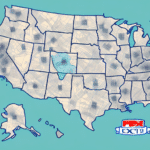Mapping Your Customer Retention Journey: Strategies for Long-Term Success
As any business owner knows, acquiring new customers is essential to growth. But equally important is retaining those customers for the long-term. That's where customer retention comes in. In this article, we're going to explore the different strategies businesses can use to keep customers coming back again and again. From understanding the customer retention journey to providing exceptional customer service, we'll cover it all.
Why Customer Retention is Important for Business Success
Before we delve into the specifics of customer retention strategies, it's important to understand why it's so crucial for business success. To put it simply, it's more cost-effective to keep existing customers than to acquire new ones. In fact, according to a study by Harvard Business Review, it can cost five times more to attract a new customer than to retain an existing one. Not to mention, loyal customers are more likely to make repeat purchases and recommend your brand to others.
Another reason why customer retention is important is that it helps to build a strong brand reputation. When customers have positive experiences with your brand and consistently receive high-quality products or services, they are more likely to become advocates for your business. This can lead to positive word-of-mouth marketing and increased brand awareness.
Additionally, focusing on customer retention can help businesses to identify areas for improvement. By gathering feedback from existing customers and addressing any issues or concerns they may have, businesses can improve their products or services and ultimately increase customer satisfaction and loyalty.
Understanding the Customer Retention Journey
The customer retention journey is the path a customer takes from their first interaction with your brand to becoming a loyal and repeat customer. This journey is made up of different touchpoints, or interactions, with your brand such as website visits, social media engagement, and purchases. By mapping out this journey, businesses can better understand their customers and develop effective retention strategies.
Identifying Potential Roadblocks
One important aspect of the customer retention journey is identifying potential roadblocks or obstacles that may prevent a customer from continuing on the path towards loyalty. These roadblocks could include:
- Poor customer service experiences
- Lack of product availability
- Confusing website navigation
By addressing these issues, businesses can improve the customer experience and increase the likelihood of customer retention.
Ongoing Communication and Engagement
Another key factor in the customer retention journey is the importance of ongoing communication and engagement with customers. This can include:
- Personalized email campaigns
- Social media interactions
- Loyalty programs
By staying top-of-mind and providing value to customers beyond just their initial purchase, businesses can build stronger relationships and increase the chances of repeat business.
Identifying Your Ideal Customer and Their Needs
The first step in any successful retention strategy is identifying your ideal customer. Understanding who your target audience is, what their needs are, and what pain points they experience is crucial. By understanding your customer demographic and what motivates them to make a purchase, you can tailor your retention efforts to their specific needs.
Creating Buyer Personas
One effective way to identify your ideal customer is by creating buyer personas. These are fictional representations of your ideal customers, based on research and data. By creating detailed personas, you can better understand your customers' goals, challenges, and behaviors. This information can then be used to create targeted marketing campaigns and personalized retention efforts that resonate with your customers and keep them coming back for more.
Building a Strong Relationship with Your Customers
Once you've identified your ideal customer, it's important to build a strong relationship with them. This can be achieved through various methods:
Personalized Communication
Personalized communication, such as email marketing and social media engagement, helps in establishing a connection with your customers. Ensure you respond promptly to customer inquiries and offer helpful advice or solutions to any problems they may have.
Loyalty Programs and Rewards
Offering loyalty programs or rewards for repeat business can incentivize customers to continue purchasing from your business and make them feel appreciated and valued.
Gathering and Utilizing Feedback
Regularly gathering feedback from your customers and using it to improve your products or services shows that you value their opinions and are committed to providing the best possible experience for them.
Creating a Personalized Experience for Each Customer
Personalization is key when it comes to customer retention. By offering personalized experiences to your customers, you show that you value them as individuals. This can include:
- Addressing them by name in communications
- Offering personalized product recommendations based on past purchases
- Providing customized promotions and discounts
By analyzing their purchase history and preferences, you can offer deals on products they are likely to be interested in, increasing the chances of them making a purchase.
Using Data and Analytics to Optimize Your Retention Strategy
Data and analytics are essential in tracking the effectiveness of your retention strategy. By analyzing customer data, such as purchase history and website behavior, businesses can optimize their retention efforts and tailor their strategy to what works best for their customers. Tools like Google Analytics and Tableau can provide valuable insights.
Developing Loyalty Programs and Incentives to Keep Customers Coming Back
Loyalty programs and incentives are effective ways to encourage customers to continue engaging with your brand. Strategies include:
- Points-Based Systems: Customers earn points for each purchase, which can be redeemed for rewards such as free products or discounts on future purchases.
- Exclusive Discounts: Offer members-only discounts to make customers feel valued.
- Tiered Rewards: Create different levels of rewards to encourage more engagement and higher spending.
Providing Exceptional Customer Service and Support
Exceptional customer service is a crucial component of any retention strategy. Key practices include:
- Responding promptly to customer complaints and feedback
- Offering easy returns or exchanges
- Going above and beyond to meet customer needs
Personalizing the experience by addressing customers by name and remembering their previous interactions can further enhance their loyalty.
Handling Customer Complaints and Feedback Effectively
No matter how great your retention strategy is, there will inevitably be dissatisfied customers. The key is to handle these complaints and feedback effectively by:
- Offering genuine apologies
- Seeking to understand the problem
- Offering solutions or compensation where appropriate
Customer complaints and feedback are valuable opportunities for improvement. Analyze the root causes and use this information to make necessary changes to your products or services.
Measuring Your Retention Success: Key Metrics to Track
Measuring the success of your retention strategy is crucial for optimizing your efforts. Key metrics include:
- Customer Lifetime Value (CLV): Indicates the total revenue a business can expect from a single customer account.
- Repeat Purchase Rate: Measures the percentage of customers who make multiple purchases.
- Net Promoter Score (NPS): Gauges customer satisfaction and loyalty by asking how likely they are to recommend your business.
- Customer Churn Rate: Measures the percentage of customers who stop using your product or service over a given period.
Monitoring these metrics helps in identifying areas for improvement and assessing the effectiveness of your retention strategies.
Challenges Faced During the Customer Retention Journey and How to Overcome Them
The customer retention journey is not without its challenges. Common obstacles include:
- Customer churn
- Ineffective communication
- Difficulty in incentivizing repeat purchases
One of the biggest challenges is keeping up with changing customer preferences and needs. To overcome these challenges:
- Analyze customer behavior and preferences regularly
- Adapt your strategies to align with evolving customer expectations
- Implement agile approaches to quickly pivot and adjust your retention efforts
Successful Case Studies of Brands with Strong Customer Retention Strategies
Looking at successful brands can offer valuable insights into effective retention strategies. Examples include:
Sephora
Sephora offers a personalized loyalty program called Beauty Insider, which provides members with exclusive discounts, birthday gifts, and access to special events. This program fosters a sense of community and belonging among customers.
Starbucks
Starbucks uses data analytics to tailor the customer experience through its Starbucks Rewards program. By analyzing purchase history, Starbucks offers personalized rewards and promotions, enhancing customer loyalty.
Amazon
Amazon's Prime Membership program provides benefits like free shipping, access to exclusive deals, and streaming services. Prime members spend significantly more than non-members, demonstrating the program's effectiveness in retaining customers.
Future Trends in Customer Retention: What Businesses Need to Know
The landscape of customer retention is continuously evolving. Staying ahead of emerging trends ensures that businesses can maintain and enhance customer loyalty. Key trends to watch include:
- Personalized AI Technology: Leveraging artificial intelligence to offer personalized recommendations and support.
- Focus on Sustainability: Customers increasingly prefer brands that prioritize sustainable and ethical practices.
- Digital Experiences: Enhancing online interactions through seamless digital experiences and omnichannel strategies.
Chatbots and AI-Powered Tools
Chatbots are becoming integral in providing real-time, personalized customer support. They can handle inquiries, offer product recommendations, and streamline the customer experience, particularly in e-commerce.
Social Media as a Retention Tool
Social media platforms like Facebook, Twitter, and Instagram are powerful tools for engaging with customers and building brand loyalty. Creating compelling content and responding promptly to customer interactions can strengthen your social media presence and foster loyalty.
Conclusion: Implementing Effective Strategies for Long-Term Customer Success
In conclusion, customer retention is a crucial component of business success. By understanding the customer retention journey, building strong relationships with customers, and tailoring retention efforts to their specific needs, businesses can increase customer loyalty and ultimately drive growth. Monitoring key metrics and staying ahead of emerging trends allow businesses to continually refine their retention strategies and secure long-term customer success.






















